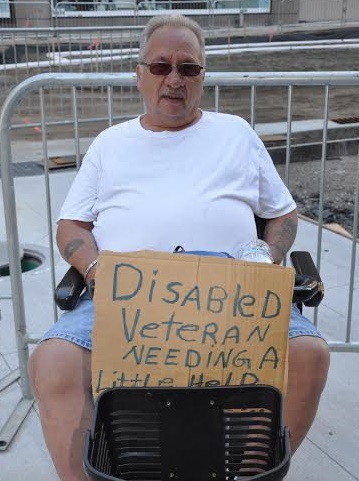What the April 2017 Minneapolis Point-in-Time Count Reveals About Homelessness
 Saturday, July 1, 2017 at 4:44PM |
Saturday, July 1, 2017 at 4:44PM |  Claudia Kittock |
Claudia Kittock | Article by Claudia Kittock, Photos by Rick Kittock
I had never heard of a ‘Point-in-Time Count’ until I began volunteering with various groups advocating for the end to street homelessness. The Point-In-Time Count (PIT) is one of the main ways people experiencing homelessness can be measured in our state and city. It provides us with a snapshot of what homelessness looks like across Minnesota at one point in time. The Federal Government requires that each state attempt to count all people experiencing homelessness on one particular night of the year, within the last 10 days in January.
This year, Minnesota’s PIT Count was on the night of January 26, and again on April 26. The PIT Count includes a count of people who are living in unsheltered situations (those who are living outside, on the streets, in abandoned building, etc.) AND of people who are temporarily sheltered (living in emergency shelters, transitional housing programs, or put up in motels through a social service program).
Why do this? What use does it have?
1) It helps us to understand the scope of homelessness and identify trends so we can better target our resources, improve services, and identify gaps in service.
2) We use data to justify current and new services and programs. Data helps us tell our story and make the case for more resources. It helps build awareness, political will and political support (at the local, state and national level) to have the right programs and services funded to meet the identified need.
3) It is a critical source of national data on the number and characteristics of people who are homeless in the U.S. Additionally, the PIT count is the main data source used for measuring national progress in meeting the goals in Opening Doors: the Federal Strategic Plan to Prevent and End Homelessness. PIT count data is provided to Congress on the general homeless population and subpopulations of homeless persons, including Veterans, families, chronically homeless individuals, and youth across the nation.
4) Data collected through the PIT is used as one of the main tools to measure progress on the Heading Home Minnesota plan to prevent and end homelessness.

One finding in the April count was that numbers of people experiencing homelessness have decreased slightly, down form 463 in October of 2016 to 399 in April. However, the number of people experiencing homelessness who are spending nights on the light rail has increased substantially, from 114 in October of 2016 to 164 in April of 2017. One theory is that there may not be an actual rise, but methods of conducting the count have improved, therefore getting more accurate data.
79% of people surveyed were attempting to live on $203/month or less, while another 10% earned between $204-733/month. Imagine trying to find a place to live in Minneapolis while earning that amount of money! Affordable housing takes on an entirely new meaning when looking at these numbers.
Studying these numbers shows the complexity of people experiencing homelessness. The reasons are as varied as the people, and finding solutions is just that complex. 66% of people experiencing homelessness in Minneapolis have a high school diploma or better.
 How can you help?
How can you help?
1. Become better educated about the issue. Learn more here.
2. “Like” Heading Home Hennepin on Facebook.
3. Volunteer for the Point In Time count in July. Contact Breanna, Street Outreach Program Manager at St. Stephen's. Her email is bjaijairam@ststephensmpls.org.
4. Keep reading this column and help whenever and wherever you can. Often a smile and an acknowledgement goes a long way!
Claudia can be reached at claudia@millcitymedia.org
